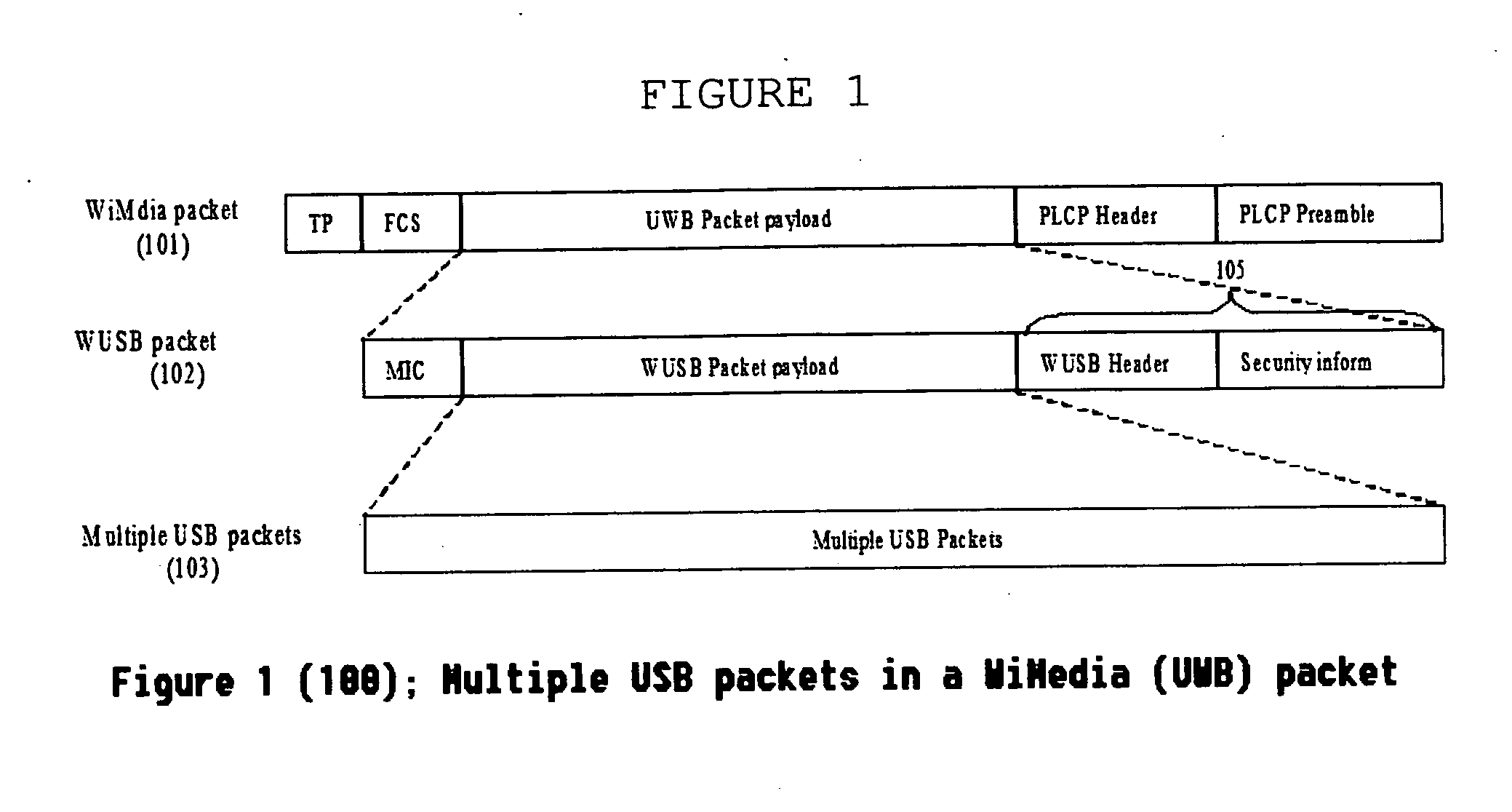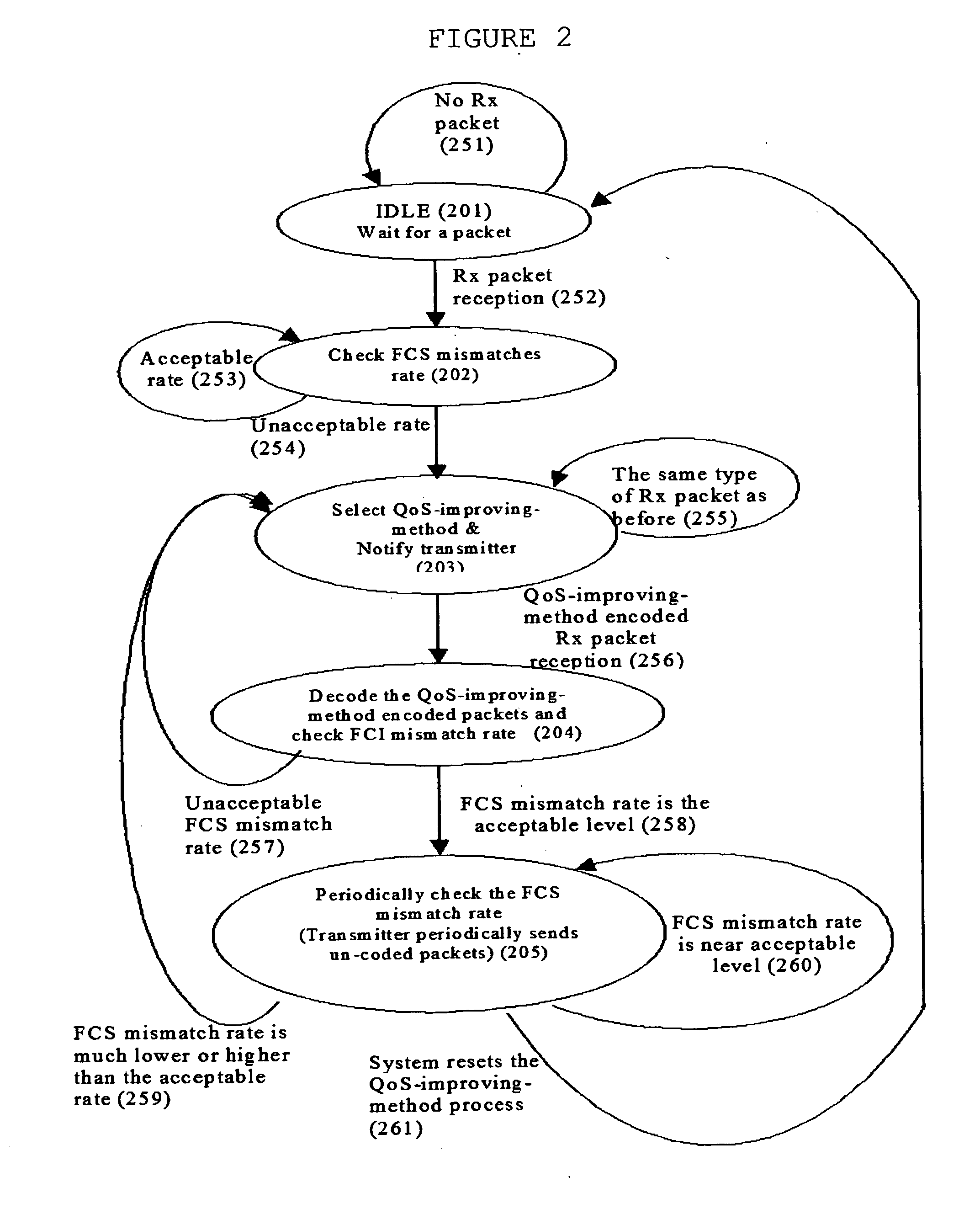Method of improving wireless communication QoS by means of automatic packet sizing and forward error correcting based on the dynamic error rate forecast
a technology of dynamic error rate forecast and automatic packet sizing, applied in the field of communication, can solve the problems of difficult to develop a way to provide the adequate level of qos for the wireless network, difficult for any one of these working groups to undertake the task, and the wusb working group cannot talk abou
- Summary
- Abstract
- Description
- Claims
- Application Information
AI Technical Summary
Benefits of technology
Problems solved by technology
Method used
Image
Examples
Embodiment Construction
[0026] This invention comprises of two sections. The first section presents a list of methods to improve the QoS of wireless communication. The second section presents a methodical way of making dynamic error rate forecasts based on the previous events to determine which QoS improving method to use, and under what circumstances.
[0027] The key of this method is how to integrate the role of the base 4 layer of the OSI model, i.e. PHY, Data Link, Network, and Transport layers.
[0028] The methods in the first section are examples of error correction algorithms and packet size selecting methods. The methods presented in this application are not a complete list of various methods. Anyone who is trained in this art can achieve the same or better result using other type methods, such as turbo code. Therefore, this application teaches the need of using error recovering or reduction methods to improve the QoS of the wireless communication that is based on the UWB (WiMedia). This application ...
PUM
 Login to View More
Login to View More Abstract
Description
Claims
Application Information
 Login to View More
Login to View More - R&D
- Intellectual Property
- Life Sciences
- Materials
- Tech Scout
- Unparalleled Data Quality
- Higher Quality Content
- 60% Fewer Hallucinations
Browse by: Latest US Patents, China's latest patents, Technical Efficacy Thesaurus, Application Domain, Technology Topic, Popular Technical Reports.
© 2025 PatSnap. All rights reserved.Legal|Privacy policy|Modern Slavery Act Transparency Statement|Sitemap|About US| Contact US: help@patsnap.com



